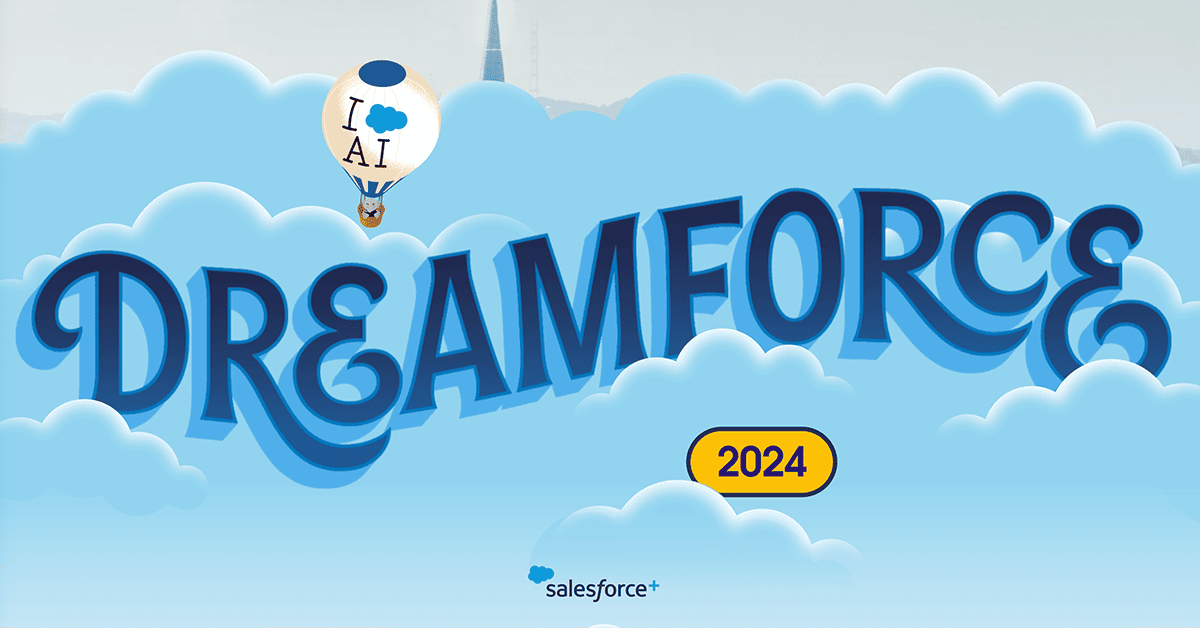Salesforce Introduces Agentforce at Dreamforce
Senior Analyst

At this year’s Dreamforce, Salesforce introduced a game-changing AI-powered capability known as Agentforce, positioning it as the “3rd wave of AI.” Designed to enhance workforce productivity and deliver streamlined business outcomes, Agentforce integrates seamlessly across the Salesforce ecosystem, leveraging data, automation, and trusted AI. This innovation is poised to address key workforce challenges, such as employee burnout and low-value task overload, by augmenting human tasks and improving business efficiency.
What is Agentforce?
Agentforce represents the evolution of AI within the Salesforce platform. Built to leverage Salesforce’s Data Cloud, this new capability enables businesses to create autonomous agents capable of handling various tasks across departments. These agents utilize customer data and metadata, offering highly accurate and context-aware responses. Agentforce’s integration with Data Cloud ensures that agents not only help streamline processes but also deliver secure, real-time results by leveraging Salesforce’s trust layer for data protection.
At the keynote, Salesforce emphasized that Agentforce is not just an enhancement of existing tools but a breakthrough in autonomous agent technology. Agentforce is designed to integrate deeply into businesses’ existing Salesforce workflows, delivering highly specialized agents that cater to specific business needs.
The Five Pillars of Agentforce
During the keynote, Salesforce’s Clara Shih outlined the five key components required to build an effective agent within the Salesforce ecosystem:
- Role: Every agent must have a clearly defined role, similar to the roles assigned to human employees in Salesforce. For example, roles may include customer service representatives, sales executives, or marketing specialists. These roles dictate the primary tasks the agent will handle.
- Data: Agents must have access to data to function effectively. Salesforce enables agents to utilize structured and unstructured data, such as customer profiles, conversations, and knowledge articles. Additionally, agents can pull in external data from other systems via Salesforce’s zero-copy integration, which virtualizes data from sources like Snowflake or external data lakes without moving it.
- Actions: Agents perform tasks by executing actions based on pre-existing workflows within Salesforce. These actions are underpinned by the business logic that companies have already built into the Salesforce platform, including flows, Apex code, and MuleSoft APIs. This minimizes the risk of errors or hallucinations, ensuring the agent can handle complex tasks reliably.
- Channels: Agents must be able to interact with users through multiple channels. Salesforce offers integrated digital channels within its platform, including WhatsApp, SMS, Apple Business Messenger, email, and voice. The digital channel integration enables businesses to deploy agents across all major communication platforms, ensuring consistent engagement.
- Trust and Security: The foundation of Agentforce is its Einstein Trust Layer, which ensures data security and privacy. Features such as prompt injection defense, data masking, and ethical guardrails provide peace of mind for businesses deploying AI agents, ensuring that sensitive data is handled appropriately and securely.
These five components make Agentforce agents not just smart but also reliable, secure, and easy to deploy within existing Salesforce environments.
Live Demonstrations: Agentforce in Action
At Dreamforce, Salesforce showcased Agentforce with a live demonstration featuring Saks Fifth Avenue. The AI agent, “Sophie,” handled customer service inquiries seamlessly, accessing order histories, processing returns, and scheduling in-store pickups. The system was so advanced that Sophie could interact across digital platforms, including Saks’ website and mobile app, and even collaborate with in-store staff, creating a unified customer experience.
In another example, Salesforce illustrated how companies like Wiley are already using Agentforce to scale their operations without additional staff. Wiley reported that Agentforce was able to resolve 40-70% of customer service cases autonomously, and in the next version (Atlas), they are seeing resolution rates as high as 90-95%.
Building Custom Agents with Agent Builder
Salesforce also introduced Agent Builder, a low-code tool that enables businesses to create custom AI agents tailored to their specific needs. Built on the Atlas reasoning engine, Agentforce utilizes advanced retrieval-augmented generation (RAG) to continuously improve agents through reinforcement learning, based on customer outcomes.
With Agent Builder, users can easily integrate existing Salesforce data and workflows to create agents that automate a wide range of business tasks. The platform is designed to make agent customization simple, allowing businesses to deploy agents quickly, with no need for extensive technical expertise.
Data Cloud and AI: A Powerful Combination
A critical component of Agentforce’s success is Salesforce’s Data Cloud, which enables businesses to connect to internal and external data sources. Using zero-copy integration, Data Cloud virtualizes data from various systems without the need to physically move it, ensuring faster and more efficient data operations.
The use of retrieval-augmented generation (RAG) further improves AI accuracy by pulling in structured and unstructured data as needed, reducing hallucinations and ensuring agents provide more reliable and contextually aware responses.
The Agentforce World Tour
To further showcase this breakthrough, Salesforce announced the Agentforce World Tour, where businesses will be able to experience Agentforce firsthand. Launch pads will allow companies to test and deploy the technology, giving them a deeper understanding of its capabilities and customization options.
The Potential of Agentforce for Higher Education
Salesforce’s Agentforce holds the potential to transform how higher education institutions manage both administrative processes and student engagement. By automating routine tasks and enhancing personalized services, Agentforce could address long-standing challenges such as administrative overload, fragmented communication, and scalability in student support services.
However, realizing this potential requires careful planning and alignment with existing structures:
- Data Readiness and Integration: To fully benefit from Agentforce, institutions need to ensure their data is of a good quality and accessible. Many higher education institutions still struggle with siloed data spread across multiple platforms (such as admissions, financial aid, and learning management systems). Connecting these data points through Salesforce’s Data Cloud would be essential for the agents to deliver accurate, context-aware responses.
- Customization to Higher Education Needs: While Agentforce offers extensive capabilities, the technology will need to be tailored to the specific workflows of higher education. This includes customizing agents to handle admissions inquiries, course registration, advising, and more. The challenge lies in adapting these agents to a sector where processes vary greatly between institutions. It will require thoughtful design and integration with existing systems like learning management and student information systems.
- Training and Cultural Change: For institutions to use Agentforce effectively, there will need to be a focus on training and upskilling staff. Faculty and administrative staff may not be familiar with AI-powered tools, so investing in training programs and developing AI-literate teams will be key. Moreover, adopting AI agents may require a cultural shift within institutions, where there is often resistance to automation in favor of traditional, manual approaches to student interaction.
- Ethical and Privacy Considerations: Given the sensitive nature of student data, institutions will need to ensure strict data governance practices are in place. Salesforce’s trust layer addresses data security and privacy, but higher education institutions will need to establish clear guidelines around how AI interacts with student information and ensure compliance with regulations like FERPA.
A Path Forward
Agentforce represents an opportunity for higher education institutions to modernize their operations, but the path to successful adoption is not without its challenges. To leverage this technology effectively, institutions will need to invest in data integration, process customization, training, and ethical governance.
With the right foundation in place, Agentforce has the potential to transform both internal operations and student interactions, creating a more efficient, responsive, and personalized education experience. For those aiming to enhance personalized student experiences, this technology could serve as the catalyst for meaningful change. AI-powered agents, with their ability to engage students individually—offering tailored course recommendations, career advice, and real-time support—can help set institutions apart in today’s increasingly competitive landscape. Delivering personalized interactions at scale not only boosts student satisfaction but also deepens engagement and retention.
Effectively adopting technologies like Agentforce will also position institutions to foster lifelong learning partnerships with students, employers, and industries. As the demand for personalized learning, particularly in career services and continuing education, continues to rise, AI integration could bridge the gap between education and the evolving needs of the workforce. However, thoughtful implementation tailored to each institution’s unique needs while addressing potential barriers will be critical to ensuring success.
Categories
Share Article:

Other Posts From this Author:
© Copyright 2025, The Tambellini Group. All Rights Reserved.